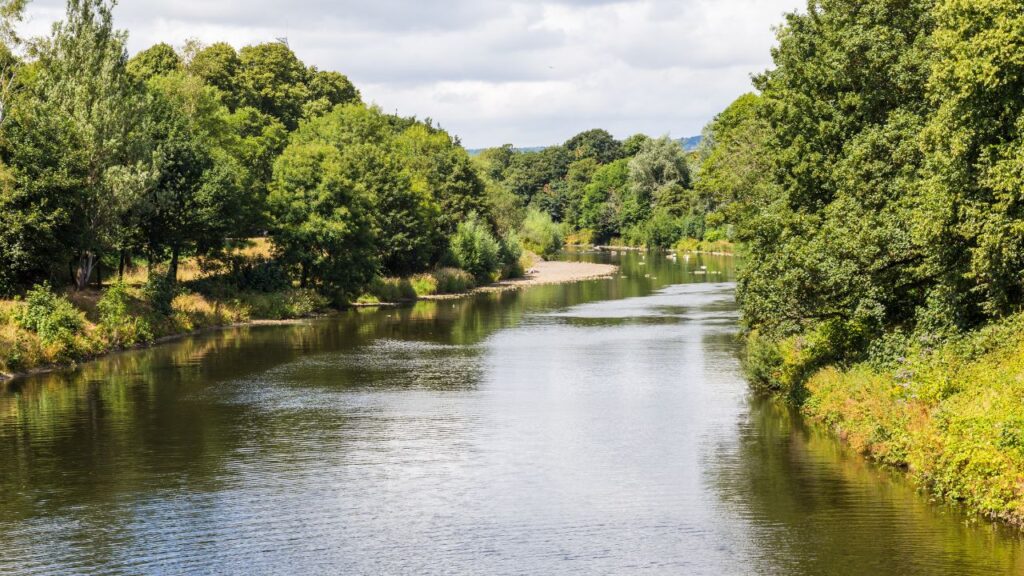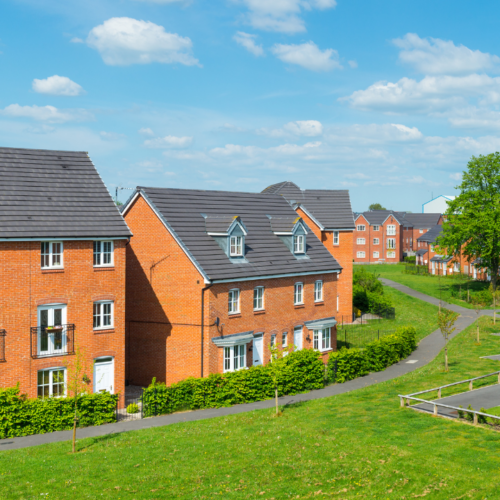As environmental consciousness continues to rise, the UK government’s Department for Environment, Food and Rural Affairs (Defra) has made Biodiversity Net Gain (BNG) a mandatory requirement for the majority planning applications in England. It is anticipated that this mandatory requirement will, in the near future, also apply to larger infrastructure projects. This guide will break down everything you need to know about BNG, from what it is, to how it’s calculated, and what it means for developers, landowners, and the future of sustainable development across England.
What is Biodiversity Net Gain (BNG)?
Biodiversity Net Gain (BNG) is a forward-thinking approach to development. It ensures that when new projects take place, the natural environment is left in a demonstrably better state than before. Given the significant impact of urban expansion and infrastructure on our ecosystems, BNG represents a crucial step towards actively creating a healthier planet.
BNG regulations are in place to ensure natural habitats are protected, improved or created when any new development takes place. This can be achieved with the implementation of a variety of on-site and off-site strategies, informed by BNG assessments.
Biodiversity Net Gain Requirements
In order to adhere to BNG regulations in England, developers must ensure that the biodiversity value of a site increases by at least 10% once the development is complete. This must then be sustained for a minimum of 30 years through management and monitoring plans, secured by legal agreements.
When Did BNG Become Mandatory?
The legal foundation for BNG was laid when the Environment Act 2021 was passed. Its phased introduction since then has meant that Biodiversity Net Gain is now a mandatory requirement for most new developments in England.
- As of 12th February 2024, it became mandatory for all major developments in England to incorporate a biodiversity plan within their planning permission applications.
- BNG requirements were then extended to also apply to small sites from 2nd April 2024.
- And from November 2025, BNG requirements are set to come into force for Nationally Significant Infrastructure Projects (NSIPs).
Failure to comply with Mandatory Biodiversity Net Gain requirements will mean that developers will not be granted planning permission for their development, so it’s essential to integrate BNG into project planning from the outset.
BNG Exemptions: When Does BNG Not Apply?
Although mandatory for most developers, some sites are exempt from BNG requirements. These include:
-
- Developments that either don’t impact a priority habitat, or that impact less than 25 square metres of habitat or 4 metres of on-site linear habitats such as hedgerows (the definitions for which are outlined under Section 41 of the Natural Environment and Rural Communities Act 2006).
- Householder applications such as extensions, sheds, conservatories and outbuildings.
- Existing planning applications made before 12th February 2024.
- Planning permissions relating to high-speed railway transport networks.
- Self-build and custom-build applications.
- Biodiversity gain sites themselves (land being used to provide BNG for other developments).
- Urgent Crown development may be exempt, typically those necessary for national security or emergency response.
Currently Nationally Significant Infrastructure Projects (NSIPs) are also except, although they must consider biodiversity and BNG is expected to be mandatory for NSIPs from November 2025.
Given the ever-evolving nature of Biodiversity Net Gain legislation, it’s important to check the latest government guidance for a full list of exemptions.
How is Biodiversity Net Gain Calculated? BNG Calculator
A standardised tool called the Statutory Biodiversity Metric is most commonly used to calculate Biodiversity Net Gain. This spreadsheet-based tool has been specially developed to assess the biodiversity value of a site through measurable indicators of habitat alternation, quantifying this in ‘biodiversity units’ (often referred to as BNG units).
The BNG metric calculator measures a site through the following primary units:
- Area habitat units;
- Hedgerow units; and
- Watercourse units.
Calculations are undertaken to give a before and after development BNG units in order to calculate the biodiversity net gain or loss as a result of the project. This is often presented as a percentage, with a target of achieving at least a 10% increase in biodiversity value post-development compared to the pre-development baseline.
Other BNG measurement tools, such as the Cambridge and Peterborough Habitat Impact Calculator, can also be helpful for specific projects depending on their size, scope and location.
A simplified BNG Small Sites Metric exists for smaller developments, making calculations more manageable. It applies to residential projects with 1-9 dwellings (or less than 0.5 hectares) and commercial developments under 1,000 square metres or 1 hectare.
How to Achieve Biodiversity Net Gain: On-site, Off-site, and BNG Credits
Developers must adhere to a clear mitigation hierarchy when planning for BNG:
- Avoid: The first priority should always be to avoid biodiversity loss wherever possible. This can be achieved through a range of methods, from early-stage ecological impact assessments, preliminary ecological appraisals, detailed species surveys, and expert advice on habitat creation and management.
- Mitigate: If these assessments find that negative impacts on habitats are unavoidable, they should be minimised. This can be achieved through a variety of mitigation strategies, from habitat translocation plans, to on-site ecological clerk of works (ECoW) supervision to ensure that measures are implemented effectively and impacts are reduced as much as possible.
- Compensate: In the event that residual biodiversity loss is unavoidable, compensation must be provided to achieve the 10% net gain. There are three primary methods for achieving this:
- On-site Biodiversity Gains: This involves creating or enhancing habitats within the red-line boundary of the development site, implementing strategies such as tree planting schemes, new ponds and wetlands and the re-establishing wildflower meadows.
- Off-site Biodiversity Gains: If a 10% BNG cannot be achieved through on-site methods, developers can purchase ‘off-site biodiversity units’ through private markets. Once purchased, these units are then delivered at a separate, designated off-site location, where habitat creation or enhancement is carried out and managed, to achieve the target habitat, for at least 30 years to deliver the necessary biodiversity uplift.
- Statutory Biodiversity Credits: This is a last resort, and can also be considered if both on-site and off-site solutions are not feasible. In these instances, developers can buy statutory biodiversity credits directly from the government, which can then be invested into strategic biodiversity projects elsewhere across England, delivering significant habitat creation and enhancement. Biodiversity Net Gain credits cost up to £650,000 (plus VAT) depending on the type of habitat, and to purchase them, developers must provide proof that they cannot deliver habitat on-site or via the off-site market.

Biodiversity Net Gain in Planning Requirements: The Process
The Biodiversity Net Gain planning process is now fully integrated with existing planning systems. Here are the key steps:
Pre-application (Recommended)
Early ecological assessments and advice are vital. These go a long way when it comes to helping developers and the relevant authorities to understand the area’s existing biodiversity, identify constraints, and inform site design to minimise impacts and maximise BNG opportunities from the outset.
Planning Application
All applications must include information on existing habitats, development impacts, and how the 10% biodiversity net gain will be met. This requires biodiversity metric tool calculations to show the site’s pre-development value.
Biodiversity Gain Plan
Once planning permission is granted, a Biodiversity Gain Plan must be approved before development starts. This documentation outlines details surrounding habitat creation or enhancement, alongside current management programs and those for the following 30 years.
Legal Agreements
BNG gains (whether they be on site or elsewhere), must be secured through legal arrangements such as Section 106 agreements or Conservation Covenants, ensuring these habitats are protected for a minimum of 30 years.
Monitoring and Reporting
Last but not least, developers are required to ensure the ongoing management and monitoring of any habitats created or impacted in relation to their development.
The Broader Picture: Environmental Net Gain
While Biodiversity Net Gain specifically focuses on measurable improvements to habitats, it’s part of a wider government ambition for Environmental Net Gain (ENG). This broader concept pushes for developments to offer environmental benefits that go beyond just biodiversity. This includes improvements in things like air and water quality, flood protection, and access to green spaces.
Biodiversity Net Gain Examples
Biodiversity Net Gain is being implemented across a variety of development types, through a wide range of strategies:
- BNG in housing: New residential developments can incorporate wildlife-friendly elements such as swift bricks and bat boxeswildflower meadows, sustainable drainage systems (SuDS) and the retention and creation of greenspaces.
- Highways Infrastructure: Large-scale highways infrastructure projects often focus on habitat creation and enhancement along verges and embankments, from arboriculture , to grassland restoration and the development of wildlife corridors, such as green bridges or underpasses.
- Marine Infrastructure: Offshore wind farms and port expansions present unique challenges for BNG – or the evolving Marine Net Gain (MNG). Specific strategies for these environments include the restoration of natural habitats such as oyster reefs and seagrass beds, alongside the removal of harmful legacy impacts like derelict structures and marine litter.
Biodiversity Net Gain Explained
We hope this guide has helped you in navigating the complexities of Biodiversity Net Gain. If you’re seeking expert assistance with your project’s BNG requirements, please get in touch and a member of our team will be more than happy to help.








